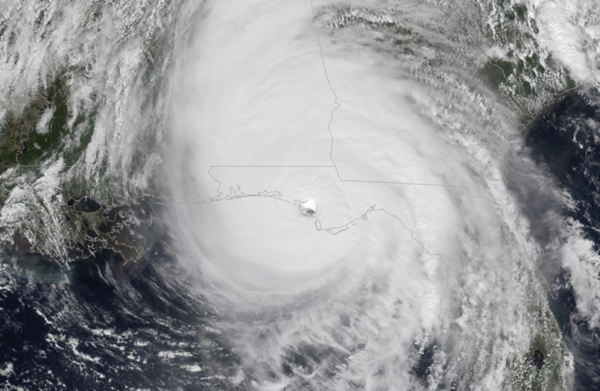Hurricane Michael Upgraded to Category 5
We all awakened on the morning of October 10th last year with a feeling of fear and foreboding. We had gone to bed with a strengthening category three hurricane 220 miles south of Panama City. We awakened to the worst news possible. The hurricane was a category four storm with top winds of 140 mph and there seemed to be no end to the pressure drop. The central pressure was down to 943 millibars and it continued to fall at a dizzying rate.
There had never been a hurricane rated category four or higher on the Florida Panhandle, and now that seemed a certainty. And certainly, it couldn’t become a category five. Could it?
By 8 a.m.., the pressure was down to 933 millibars. Along with wind speed, atmospheric pressure is a measure of storm intensity. In general, the lower a storm’s central pressure, the higher the winds.
At 10 a.m., the plane reported the pressure was 928 millibars. Less than an hour later, the pressure was 925 millibars and top winds were 150 mph. By noon, the pressure was down to 919 millibars and it became apparent that it would be the third strongest hurricane ever to hit the U.S. mainland as ranked by lowest central pressure, trailing only the Labor Day Hurricane of 1935 (892 mb) and Hurricane Camille of 1969 (900 mb).
At landfall, top winds were officially listed at 155 mph, just 1 mph shy of the threshold for category five status.
Scientists at NOAA’s National Hurricane Center conducted a detailed post-storm analysis on all the data available for Hurricane Michael and have determined that the storm’s estimated intensity at landfall was 140 knots (160 mph). This final wind intensity is a 5 knot (5 mph) increase over the operational estimate and makes Michael a category 5 storm on the Saffir-Simpson Hurricane Wind Scale at the time of landfall near Mexico Beach and Tyndall Air Force Base, Florida.
Michael is the first hurricane to make landfall in the United States as a category 5 since Hurricane Andrew in 1992, and only the fourth on record. The others are the Labor Day Hurricane in 1935 and Hurricane Camille in 1969. Michael is also the strongest hurricane landfall on record in the Florida Panhandle and only the second known category 5 landfall on the northern Gulf coast.
The final best track intensity estimate of 140 knots (160 mph) was determined by a review of the available aircraft winds, surface winds, surface pressures, satellite intensity estimates and Doppler radar velocities – including data and analyses that were not available in real time.
Category 5 winds were likely experienced over a very small area at and near the coast, and the change in estimated wind speeds is of little practical significance in terms of the impacts associated with the storm. Michael produced devastating winds and storm surge and was directly responsible for 16 deaths and about $25 billion in damage in the United States. Before hitting the United States, the cyclone brought hurricane-force winds to the western tip of Cuba when it was a category 2 Hurricane.
Category: Alabama's Weather, ALL POSTS, Tropical
















